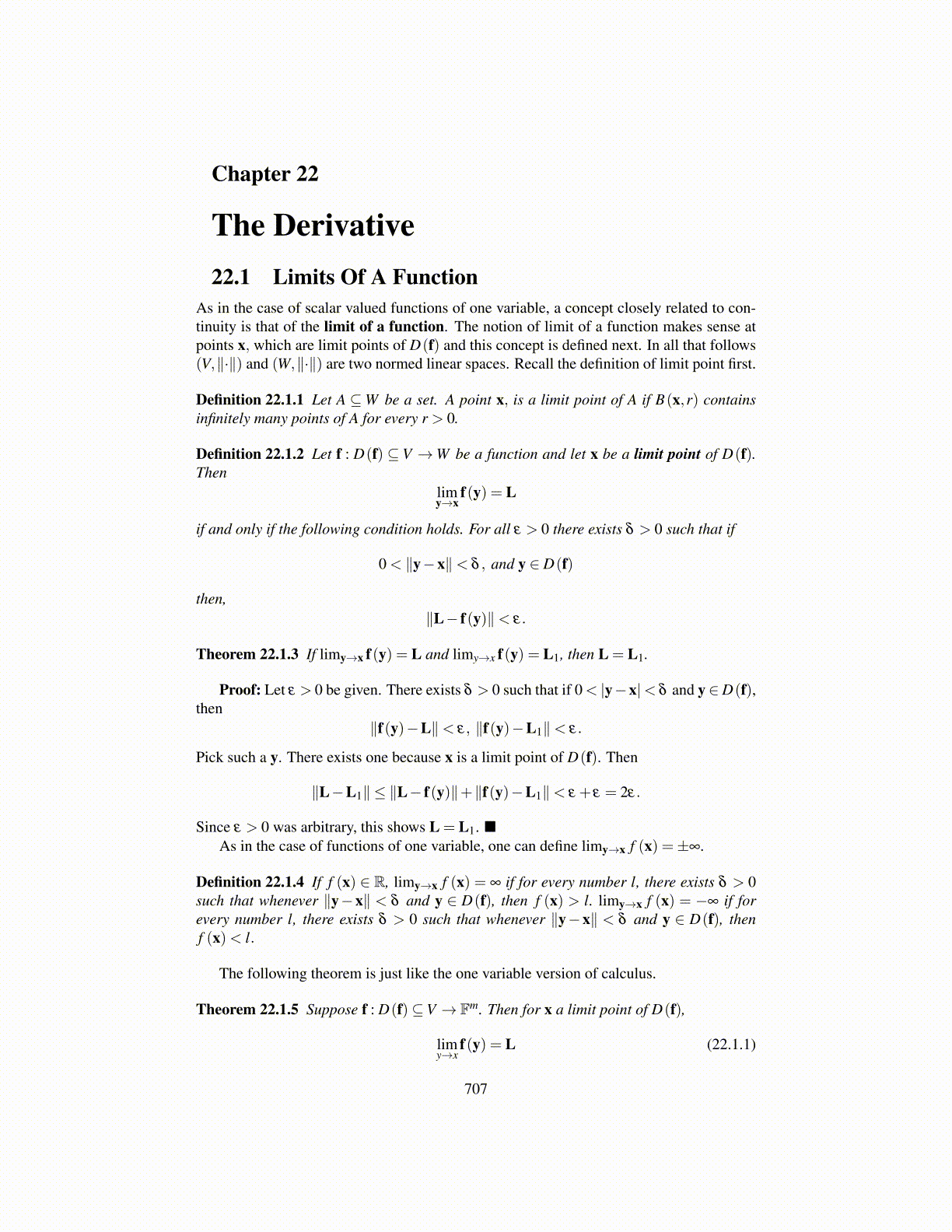
Chapter 22
The Derivative22.1 Limits Of A Function
As in the case of scalar valued functions of one variable, a concept closely related to con-tinuity is that of the limit of a function. The notion of limit of a function makes sense atpoints x, which are limit points of D(f) and this concept is defined next. In all that follows(V,∥·∥) and (W,∥·∥) are two normed linear spaces. Recall the definition of limit point first.
Definition 22.1.1 Let A ⊆W be a set. A point x, is a limit point of A if B(x,r) containsinfinitely many points of A for every r > 0.
Definition 22.1.2 Let f : D(f) ⊆ V →W be a function and let x be a limit point of D(f).Then
limy→x
f(y) = L
if and only if the following condition holds. For all ε > 0 there exists δ > 0 such that if
0 < ∥y−x∥< δ , and y ∈ D(f)
then,∥L− f(y)∥< ε.
Theorem 22.1.3 If limy→x f(y) = L and limy→x f(y) = L1, then L = L1.
Proof: Let ε > 0 be given. There exists δ > 0 such that if 0 < |y−x|< δ and y∈D(f),then
∥f(y)−L∥< ε, ∥f(y)−L1∥< ε.
Pick such a y. There exists one because x is a limit point of D(f). Then
∥L−L1∥ ≤ ∥L− f(y)∥+∥f(y)−L1∥< ε + ε = 2ε.
Since ε > 0 was arbitrary, this shows L = L1.As in the case of functions of one variable, one can define limy→x f (x) =±∞.
Definition 22.1.4 If f (x) ∈ R, limy→x f (x) = ∞ if for every number l, there exists δ > 0such that whenever ∥y−x∥ < δ and y ∈ D(f), then f (x) > l. limy→x f (x) = −∞ if forevery number l, there exists δ > 0 such that whenever ∥y−x∥ < δ and y ∈ D(f), thenf (x)< l.
The following theorem is just like the one variable version of calculus.
Theorem 22.1.5 Suppose f : D(f)⊆V → Fm. Then for x a limit point of D(f),
limy→x
f(y) = L (22.1.1)
707